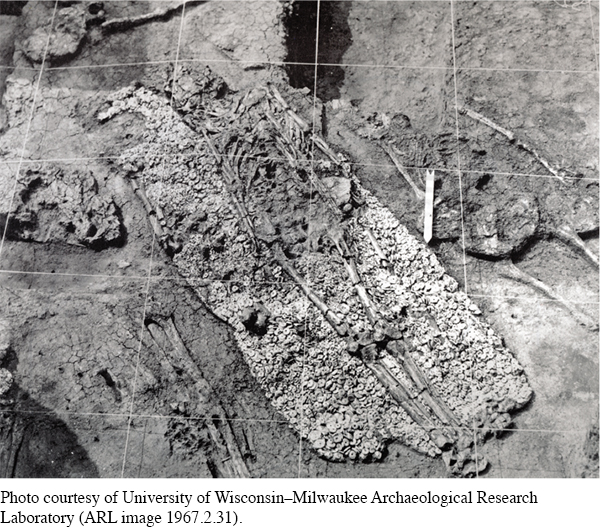When and why do historians rely on the work of archaeologists?
> COMPARE AND CONTRAST
How do archaeologists’ approaches to studying people from the past differ from those of historians?
Archaeologists and historians share the desire to learn about people who lived in the past, but they usually employ different methods to obtain information. Both archaeologists and historians study artifacts as clues to the activities and ideas of the humans who created them. They concentrate, however, on different kinds of artifacts. Archaeologists tend to focus on physical objects such as bones, spear points, pots, baskets, jewelry, clothing, and buildings. Historians direct their attention mostly to writings, such as letters, diaries, laws, speeches, newspapers, and court cases. The concentration of historians on writings and of archaeologists on other physical objects denotes a rough cultural and chronological boundary between the human beings studied by the two groups of scholars, a boundary marked by the use of writing.
Writing is defined as a system of symbols that record spoken language. Writing originated among ancient peoples in China, Egypt, and Central America about eight thousand years ago, within the most recent 2 percent of the four hundred millennia (a millennium is a thousand years) that modern human beings have existed. While those who inhabited North America in 1492 possessed many forms of symbolic representation, they did not use writing. Ancient Americans invented hundreds of spoken languages; they learned to survive in almost every natural environment; they chose and honored leaders; they traded, warred, and worshipped; and above all, they learned from and taught one another. However, much of what we would like to know about their experiences and those of other ancient Americans remains unknown because they did not write about it.
> ANALYZE EVIDENCE
Why do historians’ accounts of pre-1492 American societies lack detail and certainty?

Archaeologists specialize in learning about people who did not document their history in writing. They study the millions of artifacts these people created. They also scrutinize geological strata, pollen, and other environmental features to reconstruct as much as possible about the world inhabited by ancient peoples. This chapter relies on studies by archaeologists to sketch a brief overview of ancient America, the long first phase of the history of the United States.
Ancient Americans and their descendants resided in North America for thousands of years before Europeans arrived. While they created societies and cultures of remarkable diversity and complexity, their history cannot be reconstructed with the detail and certainty made possible by writing.
> QUICK REVIEW
Why must historians rely on the work of archaeologists to write the history of ancient America?
Understanding the American Promise 3ePrinted Page 4